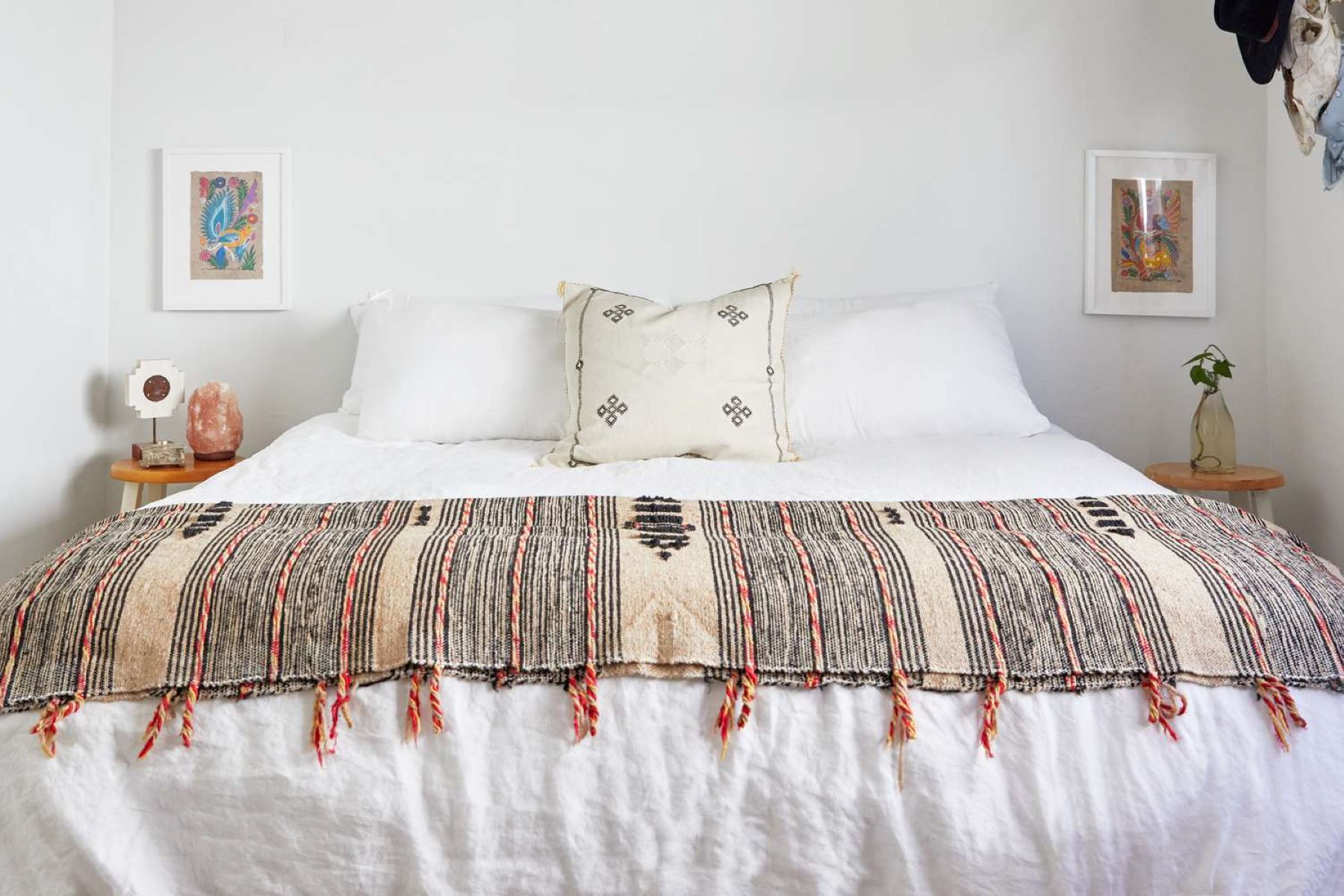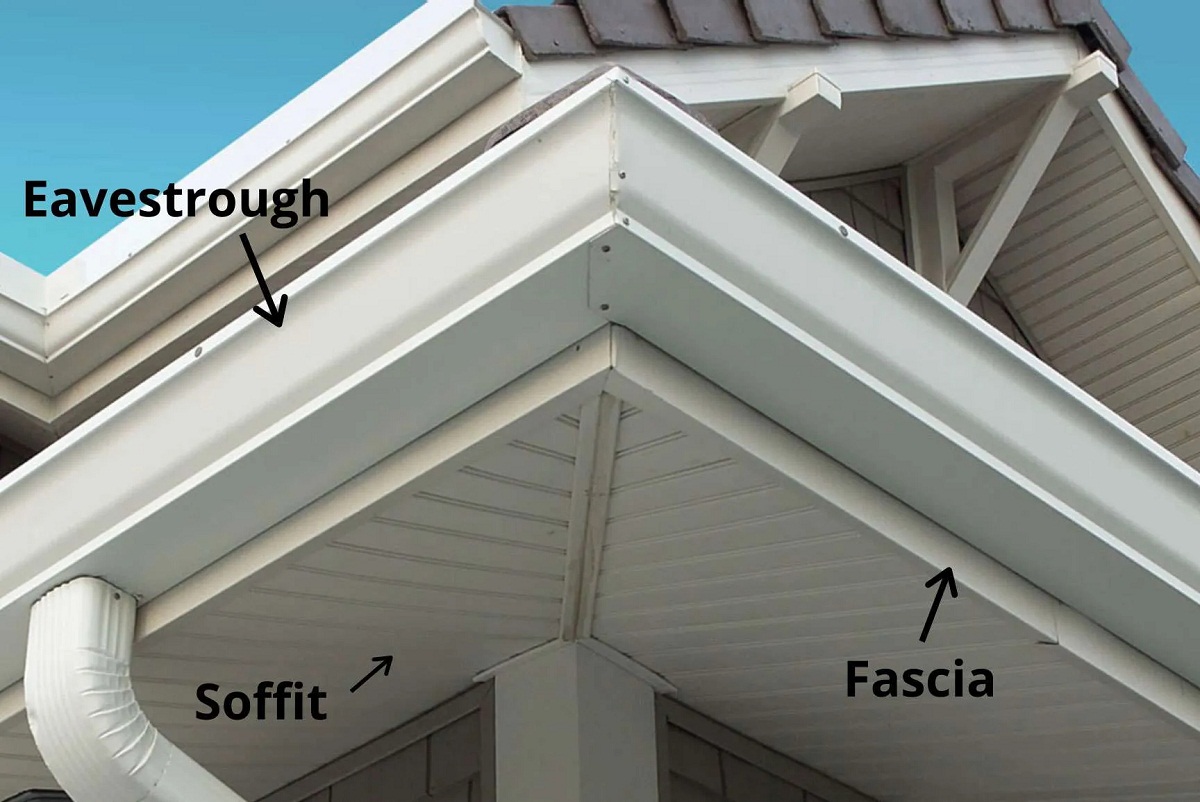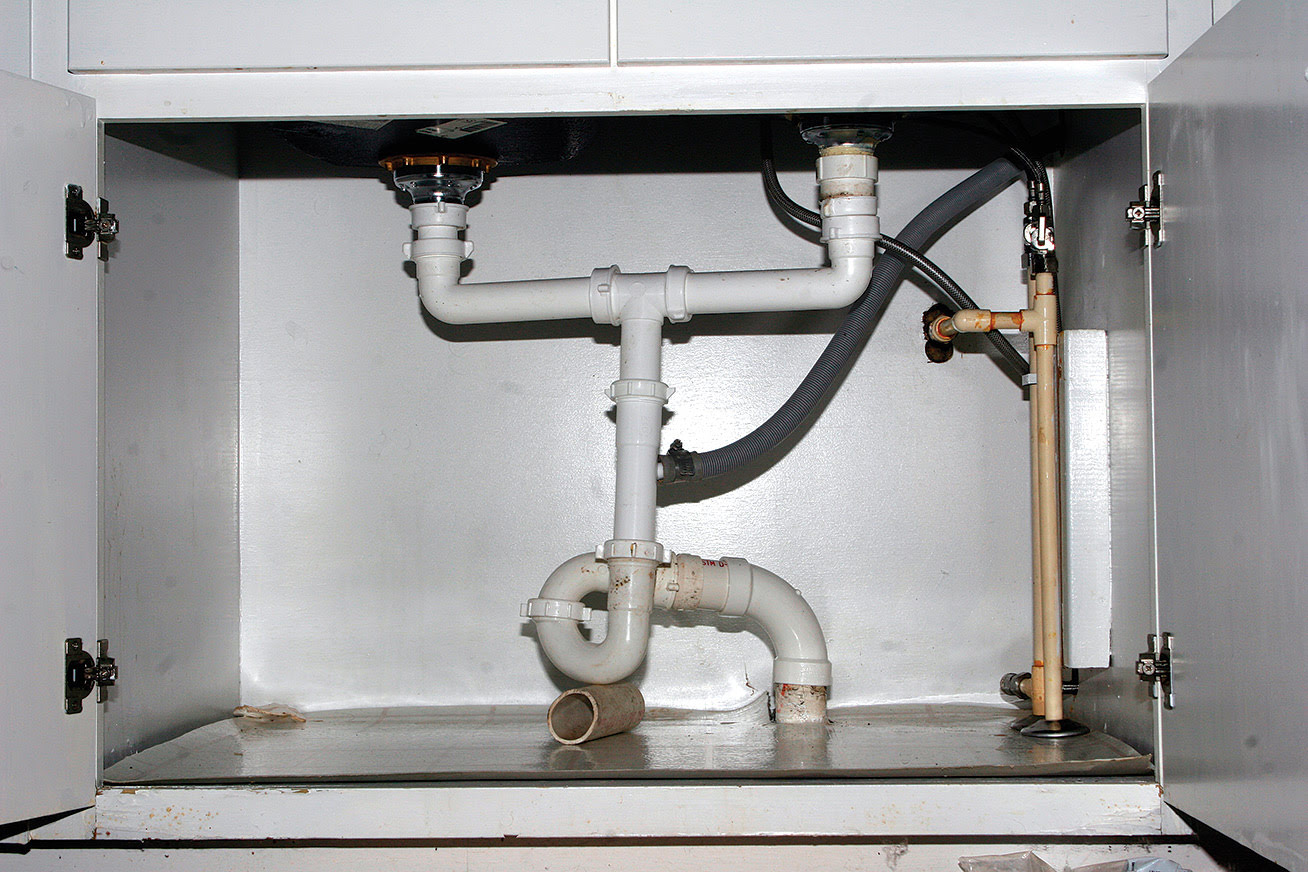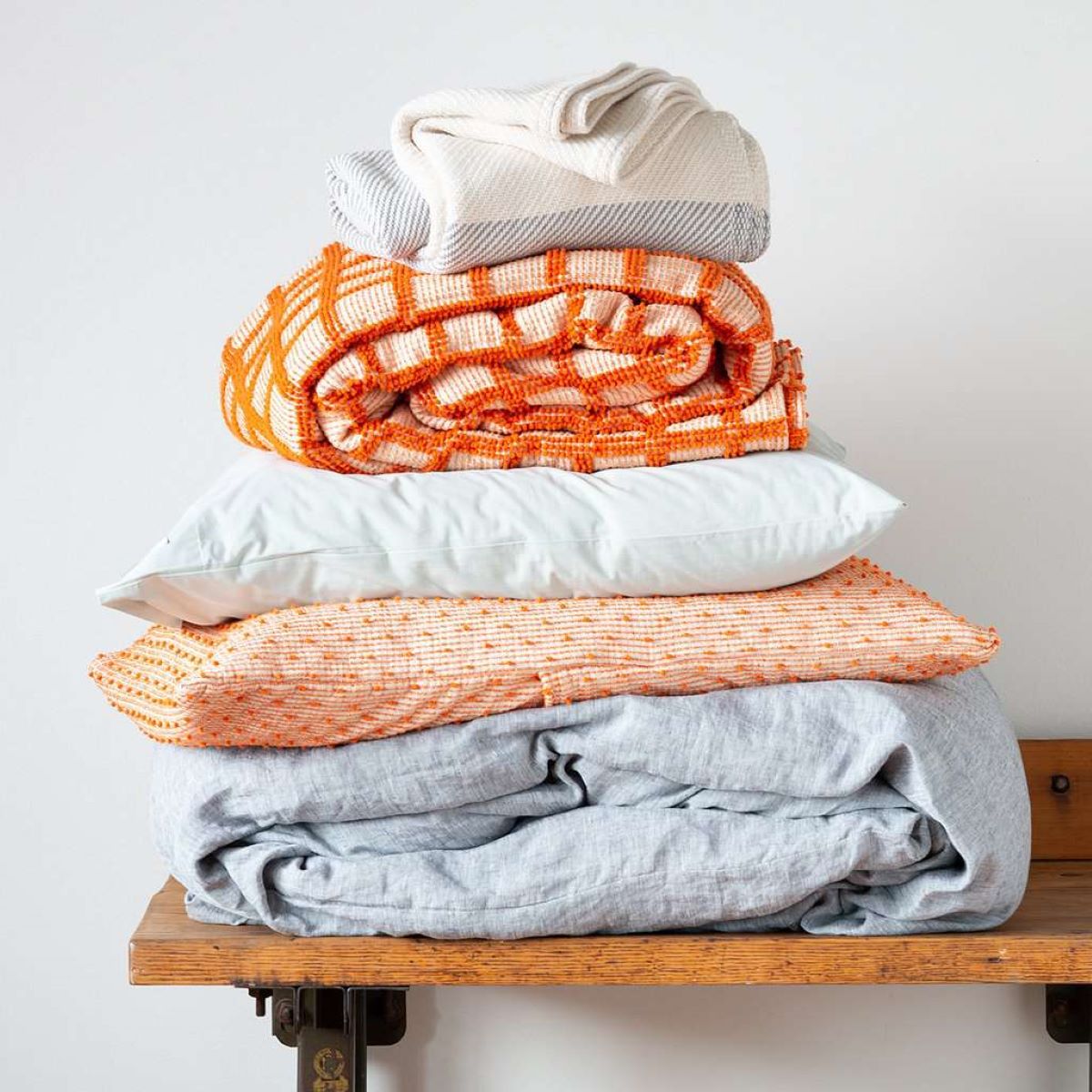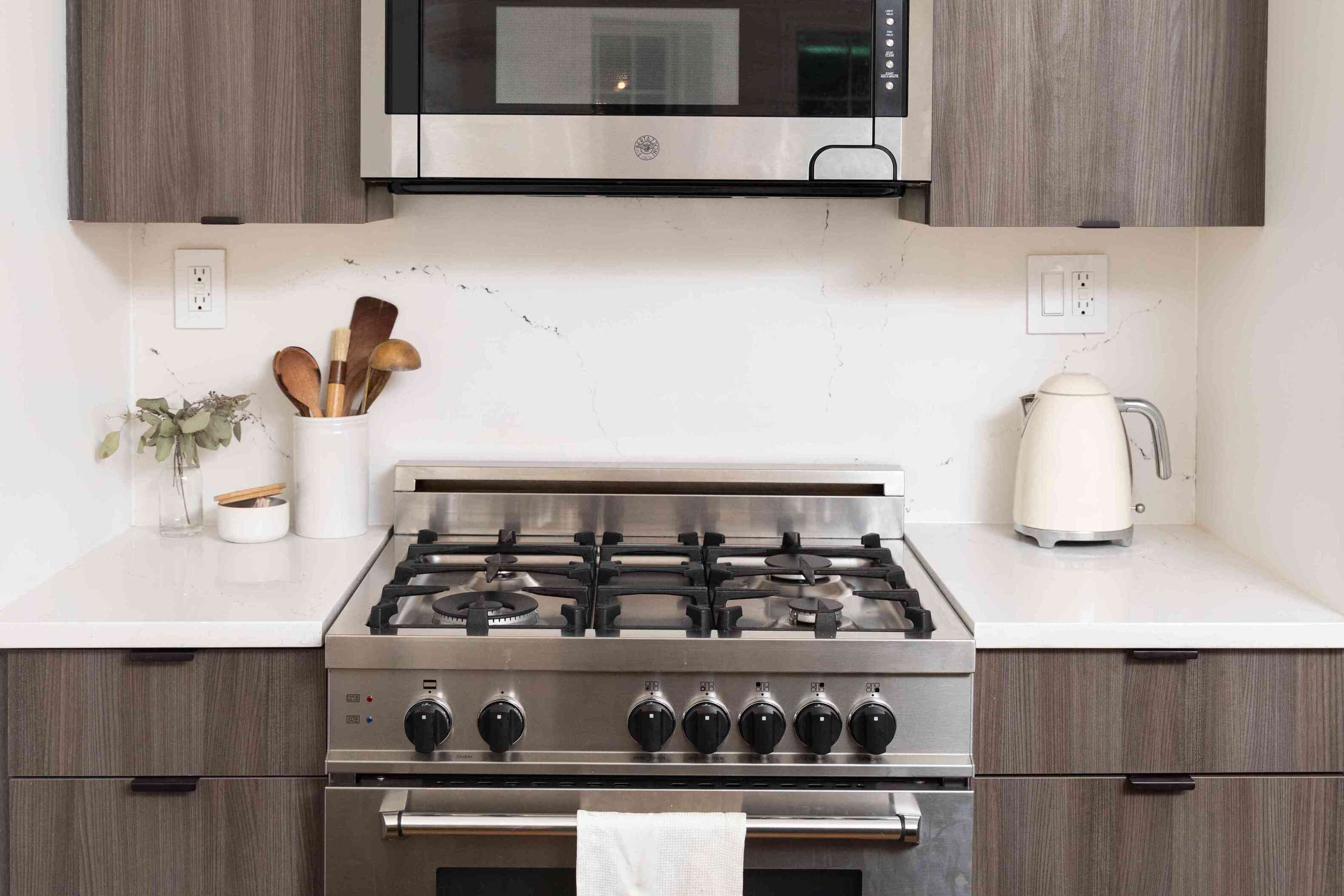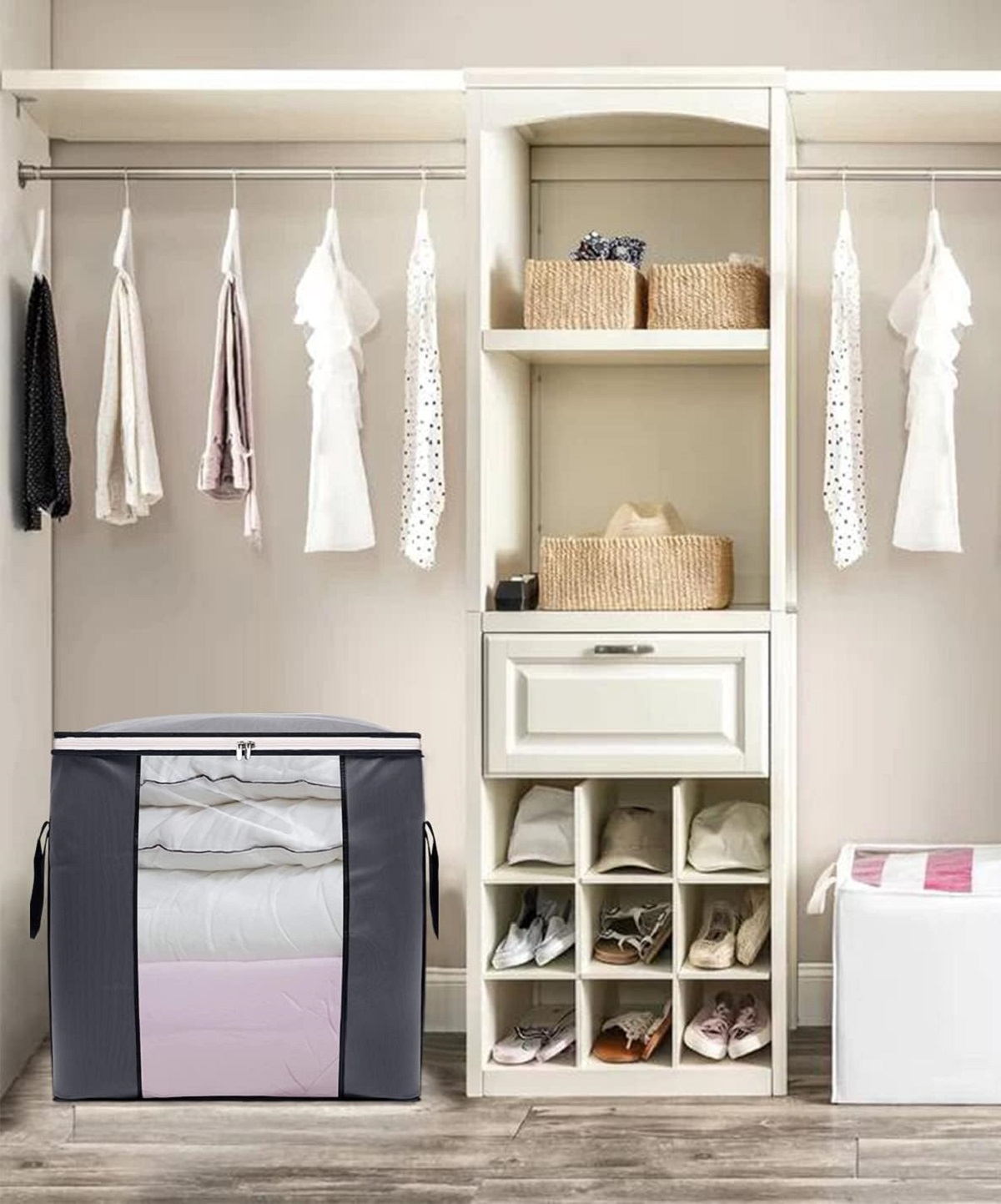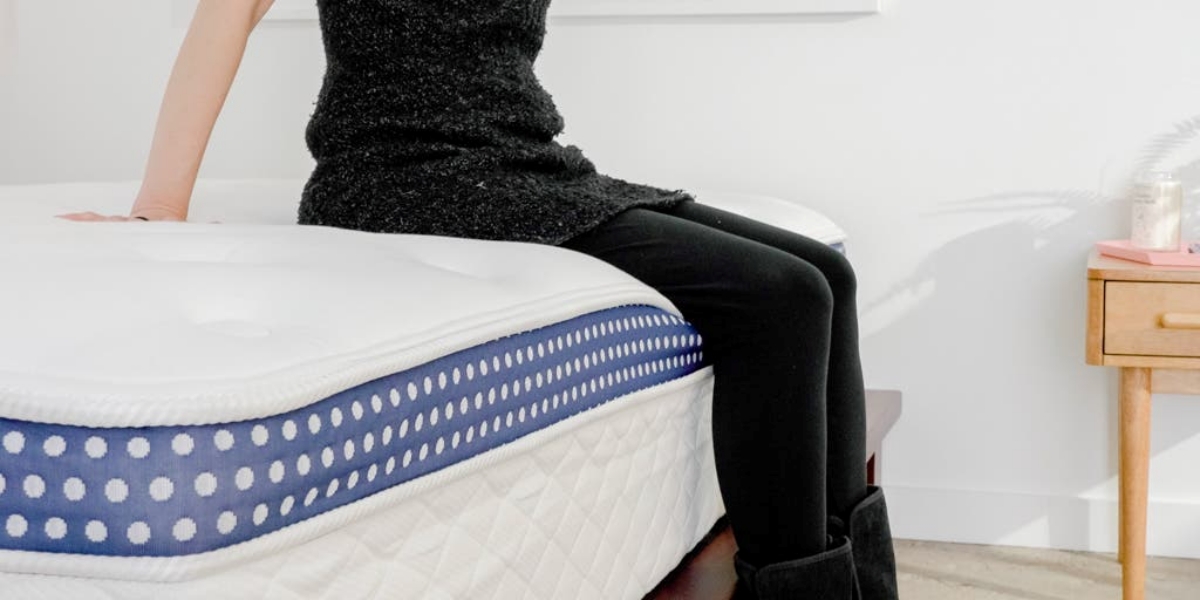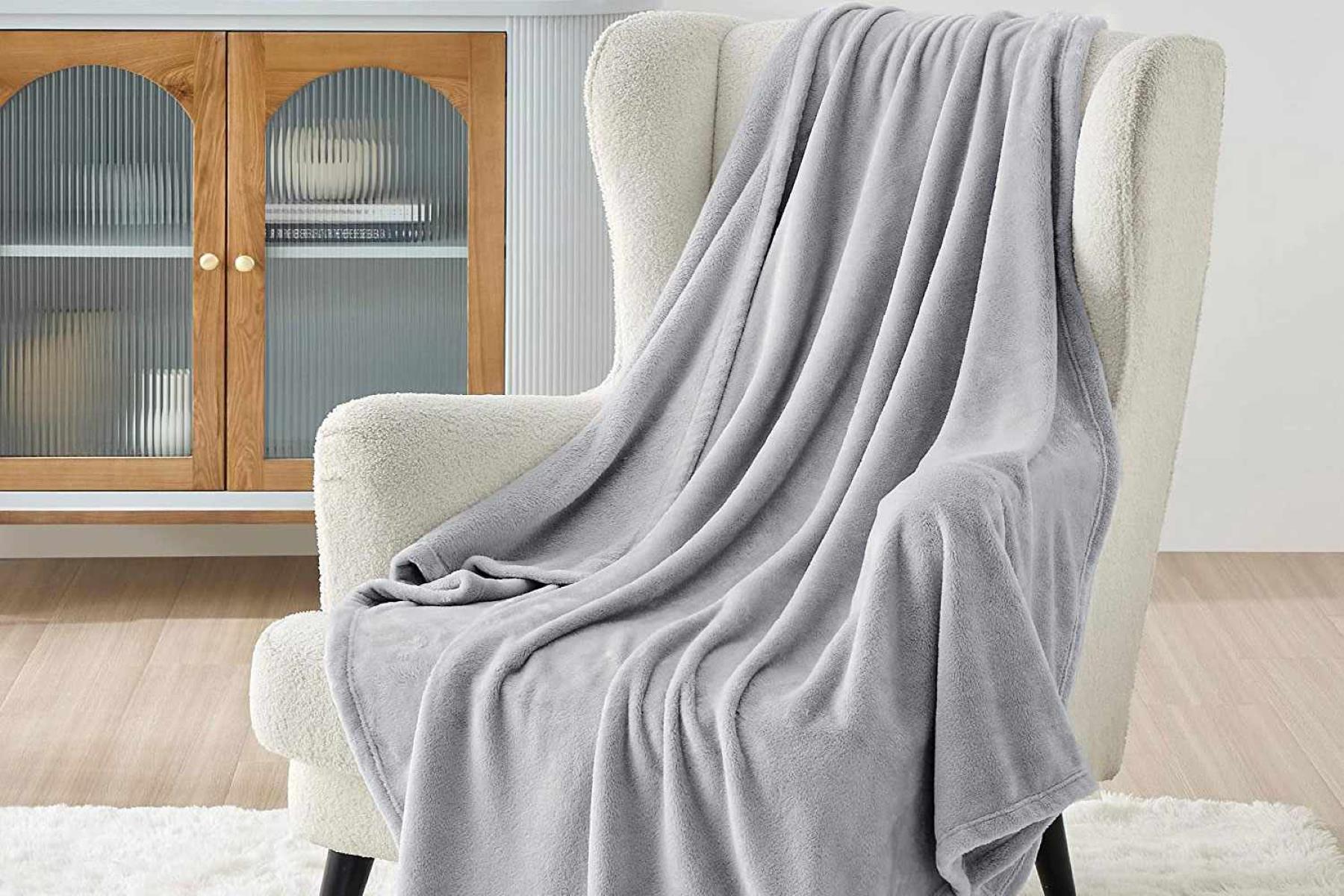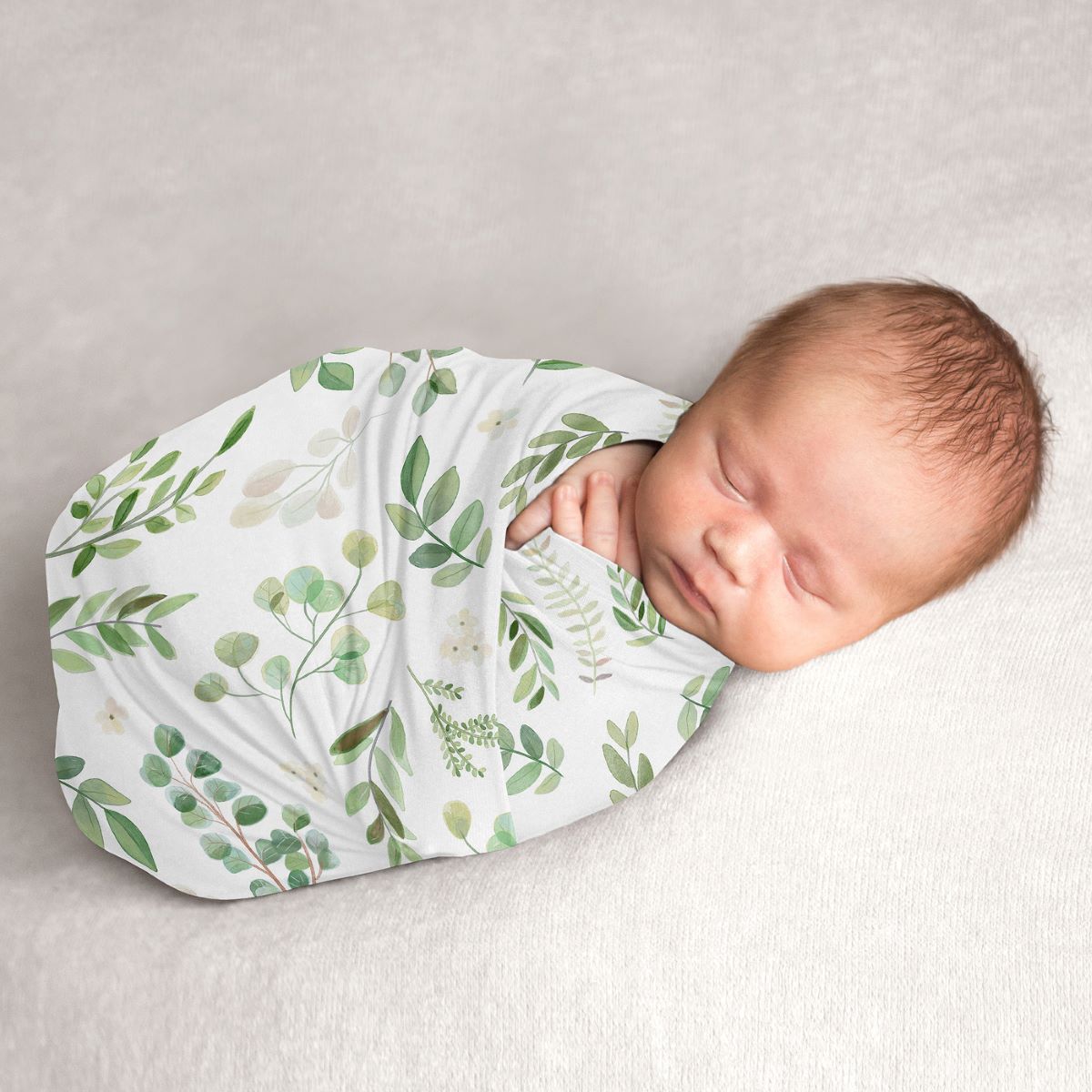Home>Articles>What Is The Blanket Under The Comforter Called
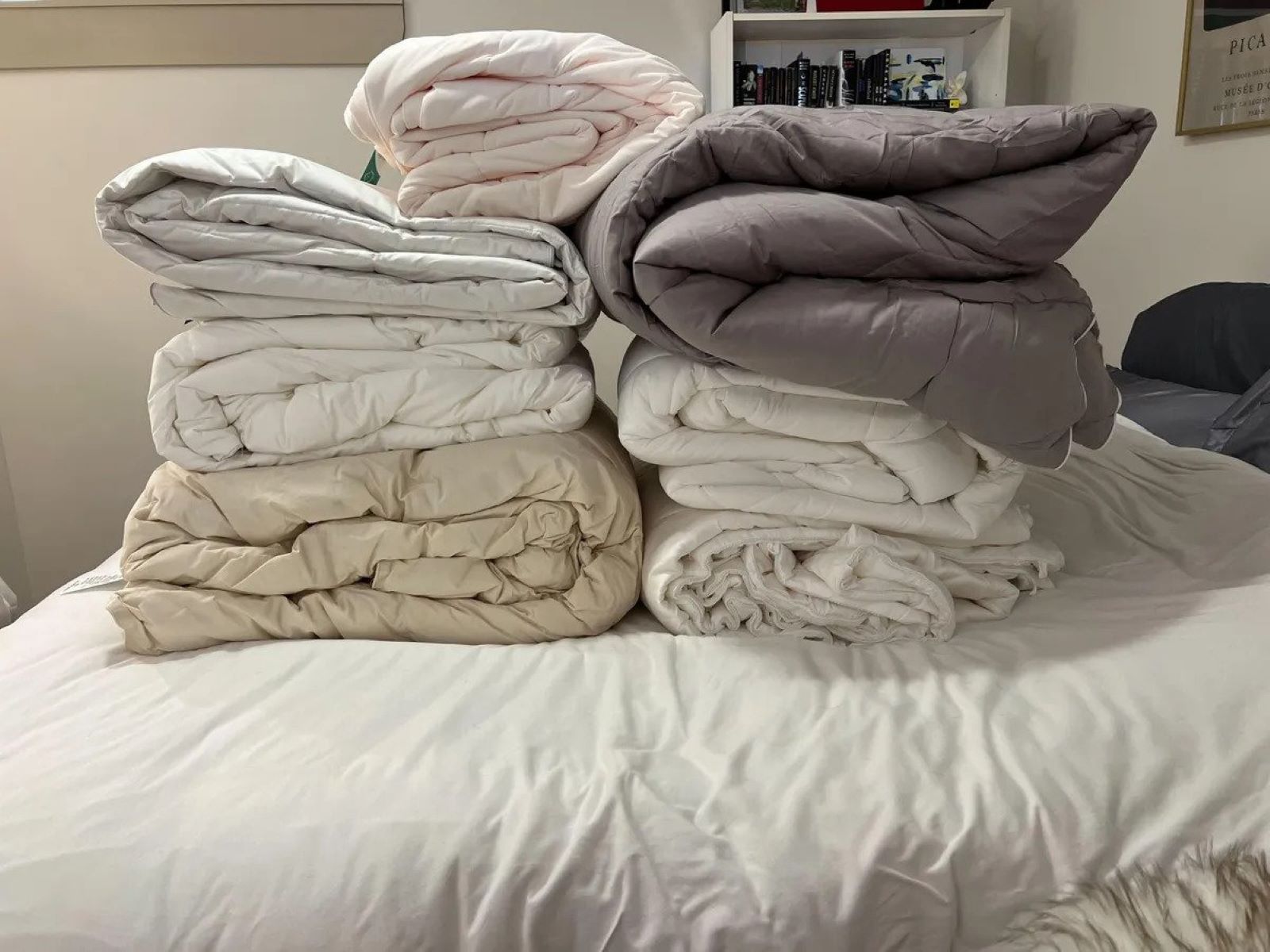

Articles
What Is The Blanket Under The Comforter Called
Modified: December 7, 2023
Discover the answer to the question "what is the blanket under the comforter called" in our informative articles. Explore the world of bedding essentials and terminology.
(Many of the links in this article redirect to a specific reviewed product. Your purchase of these products through affiliate links helps to generate commission for Storables.com, at no extra cost. Learn more)
Introduction
The blanket under the comforter, often referred to as a bedspread or a top sheet, plays an integral role in the overall comfort and coziness of your bed. While the comforter is responsible for providing warmth, the blanket underneath serves as an additional layer that offers extra insulation and enhances the overall sleeping experience.
Whether you are aware of it or not, the blanket under the comforter serves multiple purposes that go beyond just keeping you warm. In this article, we will explore the definition, purpose, types, and benefits of using a blanket under the comforter, as well as the factors to consider when choosing one and how to properly care for it.
So, let’s dive in and discover why the blanket under the comforter is an essential component of a comfortable and inviting bed.
Key Takeaways:
- The blanket under the comforter provides extra warmth, moisture absorption, and protection for your comforter. It allows for customization, enhances comfort, and adds a decorative touch to your bed ensemble.
- When choosing a blanket under the comforter, consider material, warmth level, size, weight, design, budget, and care instructions. Proper care and maintenance are essential to ensure longevity and optimal comfort.
Read more: What Is A Picnic Blanket Called
Definition of the Blanket Under the Comforter
The blanket under the comforter, also known as a bedspread or a top sheet, is a thin layer of fabric that is placed directly on top of the mattress and underneath the comforter or duvet. It serves as an additional barrier between your body and the comforter, providing extra insulation and comfort during sleep.
This blanket is typically made of lightweight materials such as cotton, polyester, or a blend of fabrics. It is designed to be breathable, allowing air to circulate and preventing you from feeling too hot or suffocated under the comforter.
The blanket under the comforter is available in various sizes to match the dimensions of your bed, ranging from twin to California king. It usually has a simple design, without much embellishment or patterns, as its main purpose is practicality and functionality rather than aesthetics.
While some individuals prefer to use a separate flat sheet as the blanket under the comforter, others opt for a fitted sheet that also serves as a blanket. The choice between the two depends on personal preference and the level of warmth and comfort desired.
Overall, the blanket under the comforter acts as a protective layer, preventing direct contact between your body and the comforter, and enhancing the overall sleep experience by adding an extra level of insulation and comfort.
Purpose and Functionality of the Blanket Under the Comforter
The main purpose of the blanket under the comforter is to provide an additional layer of warmth and insulation. It acts as a barrier between your body and the comforter, trapping heat and keeping you cozy throughout the night. By adding this extra layer, the blanket helps to regulate your body temperature and prevent you from feeling too hot or too cold.
In addition to its role in temperature control, the blanket under the comforter serves several other important functions:
- Moisture Absorption: The blanket helps to absorb moisture and sweat that may accumulate during sleep, keeping you dry and comfortable. This can be particularly beneficial for individuals who tend to perspire during the night.
- Protection: It acts as a protective barrier for the comforter or duvet, preventing direct contact with body oils, skin cells, and other debris. This extends the lifespan of your comforter and makes it easier to clean and maintain.
- Added Comfort: The blanket adds an extra layer of softness and cushioning to enhance the overall comfort of your bed. It can provide a cozy and luxurious feel, making your bed more inviting and comfortable to sleep in.
- Decorative Element: The blanket under the comforter can also serve as a decorative element, adding depth and texture to your bed ensemble. It can complement the colors and patterns of your bedding, contributing to the overall aesthetic appeal of your bedroom.
- Flexibility: Using a blanket under the comforter allows for easy customization of your sleep environment. Depending on the season or your personal preferences, you can adjust the number of layers you sleep with by removing or adding blankets, ensuring optimal comfort throughout the year.
With its various functions, the blanket under the comforter plays an integral role in creating a comfortable and inviting sleep sanctuary.
Types and Materials of the Blanket Under the Comforter
The blanket under the comforter comes in a variety of types and materials to suit different needs and preferences. Let’s explore some popular options:
- Cotton Blankets: Cotton is a common material used for the blanket under the comforter. It is lightweight, breathable, and hypoallergenic, making it suitable for those with sensitive skin or allergies. Cotton blankets provide a soft and comfortable feel, and they are easy to care for, as they can be machine-washed and dried.
- Wool Blankets: Wool is known for its excellent insulation properties, making it an ideal choice for colder climates or individuals who tend to feel chilly at night. Wool blankets provide natural warmth and regulate body temperature effectively. They are also moisture-wicking and resistant to mold and mildew. However, wool may be too heavy or warm for some individuals.
- Polyester Blankets: Polyester blankets are budget-friendly and durable. They are often lightweight and provide good insulation. Polyester is known for its quick-drying properties, making it a suitable choice for individuals who tend to sweat at night. However, polyester may not be as breathable as natural materials and can trap heat, which may be a drawback for those who sleep hot.
- Microfiber Blankets: Microfiber is a synthetic material that has gained popularity in recent years. Microfiber blankets offer a soft and plush feel, similar to luxurious fabrics such as cashmere. They are lightweight, breathable, and often hypoallergenic. Microfiber blankets are known for their durability and resistance to wrinkles and fading.
- Acrylic Blankets: Acrylic blankets mimic the warmth and softness of wool but at a more affordable price point. They are lightweight, hypoallergenic, and often resistant to pilling. Acrylic blankets can provide a cozy and comfortable feel on your bed.
When choosing a material for the blanket under the comforter, consider factors such as personal preference, climate, and any specific allergies or sensitivities you might have. It’s also important to keep in mind that the material of the blanket should complement the characteristics of your comforter or duvet to provide optimal comfort and functionality.
Additionally, the blanket under the comforter comes in various designs and patterns to suit different aesthetics and personal styles. From solid colors to stripes, plaids, or even intricate jacquard weaves, you can find a blanket that matches your bedroom decor and adds a touch of visual appeal to your bed ensemble.
With the wide range of materials and designs available, there is a blanket under the comforter to suit every individual’s needs and preferences, allowing for a personalized and comfortable sleep experience.
The blanket under the comforter is called a “bedspread” or “coverlet.” It adds an extra layer of warmth and can also be used for decorative purposes.
Benefits of Using a Blanket Under the Comforter
Using a blanket under the comforter offers several benefits that can enhance your sleep experience and improve the overall comfort of your bed. Let’s explore some of the advantages:
- Extra Warmth: The primary benefit of using a blanket under the comforter is the additional layer of warmth it provides. This is particularly beneficial during colder months or in cooler climates, ensuring that you stay snug and cozy throughout the night.
- Temperature Regulation: The blanket under the comforter helps regulate your body temperature by providing insulation. It helps retain body heat, preventing you from feeling too cold, but also allows airflow to prevent overheating. This promotes a comfortable sleeping environment and reduces the need for constantly adjusting the thermostat.
- Moisture Absorption: Sweating during sleep is a common occurrence, but it can make you feel uncomfortable and disrupt your rest. A blanket under the comforter helps absorb moisture, keeping you dry and ensuring a more comfortable sleep. It also prevents the buildup of sweat and the associated odors on your comforter.
- Protection for the Comforter: By using a blanket under the comforter, you create a protective barrier that helps extend the life of your comforter. The blanket acts as a shield against body oils, skin cells, and other debris, which can accumulate and deteriorate the quality of the comforter over time. This means you can enjoy your comforter for longer and save money in the long run.
- Customization and Versatility: The blanket under the comforter allows for easy customization of your sleep environment. Depending on the season or your personal preferences, you can add or remove layers to achieve the desired level of warmth and comfort. This flexibility ensures that your bed is suitable for any weather condition or personal preference.
- Enhanced Comfort and Coziness: The blanket underneath the comforter adds an extra layer of softness and cushioning, making your bed even more comfortable. It provides a plush feeling and can contribute to a cozy and inviting sleep environment. The added comfort can help you relax and unwind, promoting a deeper and more restful sleep.
Overall, using a blanket under the comforter offers numerous benefits, including extra warmth, temperature regulation, moisture absorption, protection for the comforter, customization options, and enhanced comfort. It is a simple yet effective way to improve the quality of your sleep and create a cozy retreat in your bedroom.
Factors to Consider When Choosing a Blanket Under the Comforter
When selecting a blanket to use under your comforter, there are several important factors to consider. Taking the time to consider these factors will help ensure that you choose a blanket that meets your specific needs and preferences. Here are some key factors to keep in mind:
- Material: The material of the blanket is crucial for comfort and durability. Consider whether you prefer natural fibers like cotton or wool, or synthetic materials like polyester or microfiber. Each material offers different properties such as breathability, softness, and ease of care. Choose a material that suits your preferences and any specific sensitivities or allergies you may have.
- Warmth Level: Consider the climate and your personal preference for warmth. If you live in a colder region or tend to feel chilly at night, opt for a warmer blanket such as wool or a thicker cotton. For warmer climates or individuals who tend to sleep hot, lighter materials like cotton or microfiber are more suitable.
- Size: Ensure the blanket is the right size for your bed. It should cover the mattress adequately and tuck under the sides, allowing for easy layering with your comforter.
- Weight: Consider the weight of the blanket. Some individuals prefer a lightweight blanket, while others prefer a heavier, more substantial feel. The weight should be comfortable and provide the desired level of coziness without feeling too bulky or burdensome.
- Design and Aesthetics: Consider the design and aesthetics of the blanket. Whether you prefer a simple, solid color or a patterned design, choose a blanket that complements your bedroom decor and personal style. Aesthetics may not be the primary consideration, but a visually appealing blanket can add to the overall ambiance of your sleep space.
- Budget: Set a budget for your blanket purchase. Prices can vary based on the material, brand, and quality. Consider the long-term value and investment in terms of durability and comfort when determining your budget.
- Care and Maintenance: Consider the ease of care and maintenance for the blanket. Check the care instructions to ensure it aligns with your lifestyle. Some blankets are machine-washable, while others may require dry cleaning.
By considering these factors when choosing a blanket under the comforter, you can select one that suits your needs, preferences, and lifestyle. Remember, the right blanket will not only enhance your sleep experience, but it will also contribute to the overall comfort and aesthetic appeal of your bed.
How to Properly Care for a Blanket Under the Comforter
Proper care and maintenance of your blanket under the comforter will help prolong its lifespan and ensure that it remains clean, fresh, and comfortable. Here are some essential tips to keep in mind when caring for your blanket:
- Read and Follow Care Instructions: Start by checking the care instructions provided by the manufacturer. These instructions will guide you on the appropriate cleaning methods for your specific blanket. Different materials and constructions may require different care techniques.
- Regular Washing: Wash your blanket regularly to remove dirt, sweat, and other debris that may accumulate over time. Follow the care instructions for the recommended washing method. Most blankets can be machine-washed, but some may require hand-washing or dry cleaning. Use gentle detergents and avoid the use of harsh chemicals or bleach that could damage the fabric.
- Use Appropriate Water Temperature: Pay attention to the recommended water temperature for washing your blanket. Using hot water can cause shrinking or damage to certain materials, so it’s important to follow the guidelines provided.
- Drying: When drying your blanket, it’s best to follow the care instructions. Most blankets can be tumble-dried on a low heat setting, but some may need to be air-dried to prevent damage. Avoid hanging your blanket in direct sunlight as this can cause fading or discoloration.
- Stain Spot Treatment: Take immediate action to treat any stains on your blanket. Blot the stain gently with a clean cloth or sponge using mild detergent or a stain remover specifically designed for the fabric. Avoid rubbing the stain vigorously, as this can spread the stain or damage the material.
- Store Properly: When not in use, store your blanket in a clean, dry, and well-ventilated area. Avoid keeping it in damp or humid environments, as this can promote mildew or mold growth. Consider using a storage bag or container to protect the blanket from dust and pests.
- Regular Inspections: Periodically inspect your blanket for any signs of wear, tear, or damage. Address any loose threads, holes, or snags, as they can worsen over time and impact the functionality and appearance of the blanket.
- Professional Cleaning: For blankets made of delicate or luxurious materials, it’s advisable to take them to a professional cleaner for occasional deep cleaning. They have the expertise and specialized equipment to handle delicate fabrics without causing damage.
By following these care tips, you can maintain the cleanliness, freshness, and quality of your blanket under the comforter, ensuring that it continues to provide optimal warmth and comfort for years to come.
Conclusion
The blanket under the comforter is an essential component of a comfortable and inviting bed. It provides an additional layer of insulation, warmth, and comfort, enhancing your sleep experience. Whether you prefer the softness of cotton, the warmth of wool, or the affordability of synthetic materials, there is a wide range of options available to suit your preferences.
Using a blanket under the comforter offers several benefits, such as extra warmth, temperature regulation, moisture absorption, and protection for your comforter. It allows for customization and versatility, allowing you to adjust the layers according to season and personal preference. Additionally, the blanket under the comforter can add a decorative element to your bed, complementing your overall bedroom aesthetic.
When choosing a blanket, consider factors such as material, warmth level, size, weight, design, budget, and care instructions. Taking these factors into account will help you select a blanket that meets your specific needs and preferences, ensuring optimal comfort and longevity.
Proper care and maintenance of your blanket under the comforter are essential to keep it clean, fresh, and comfortable. Follow the care instructions provided by the manufacturer, and wash and dry the blanket according to the recommended methods. Address any stains or damages promptly and store the blanket in a clean and dry area when not in use.
In conclusion, the blanket under the comforter plays a vital role in creating a cozy and inviting sleep environment. By choosing the right blanket and properly caring for it, you can enhance your sleep experience, extend the life of your comforter, and create a comfortable sanctuary for rest and relaxation.
Frequently Asked Questions about What Is The Blanket Under The Comforter Called
Was this page helpful?
At Storables.com, we guarantee accurate and reliable information. Our content, validated by Expert Board Contributors, is crafted following stringent Editorial Policies. We're committed to providing you with well-researched, expert-backed insights for all your informational needs.
